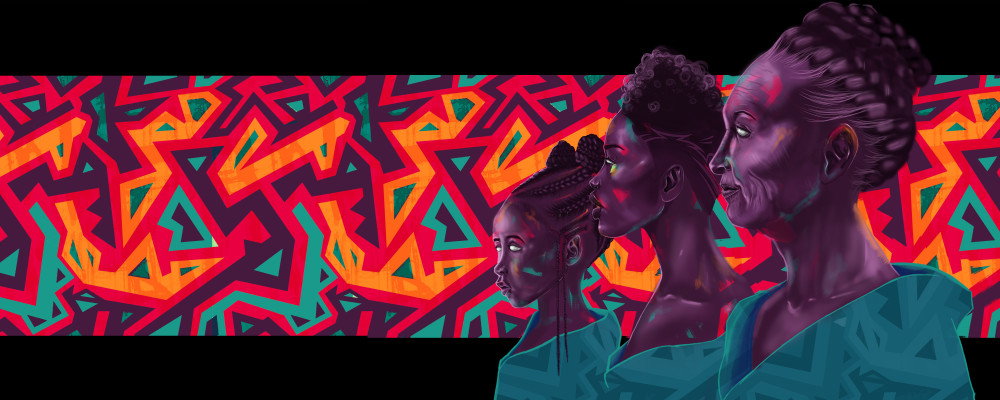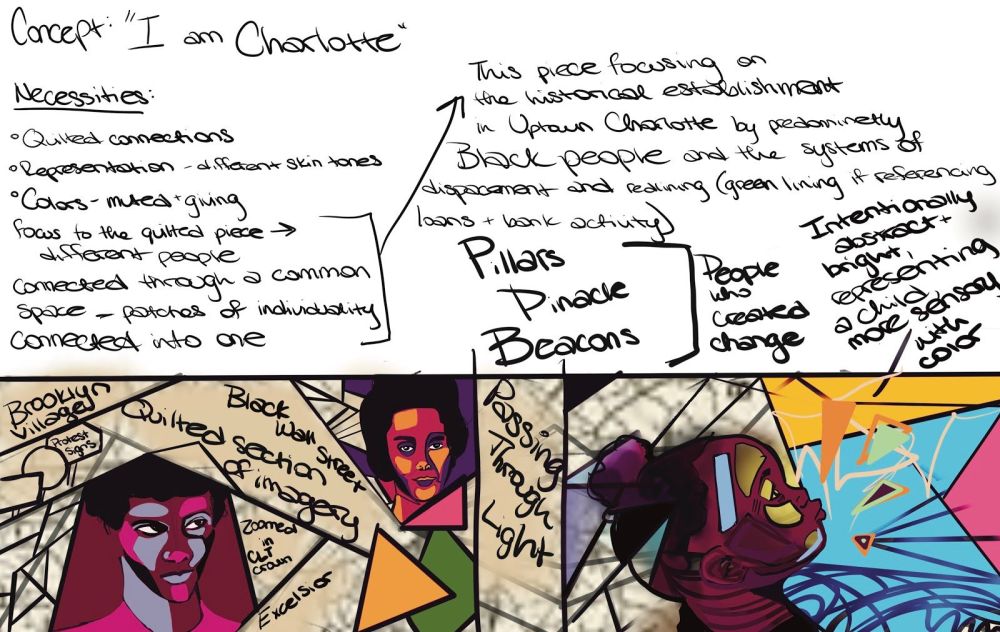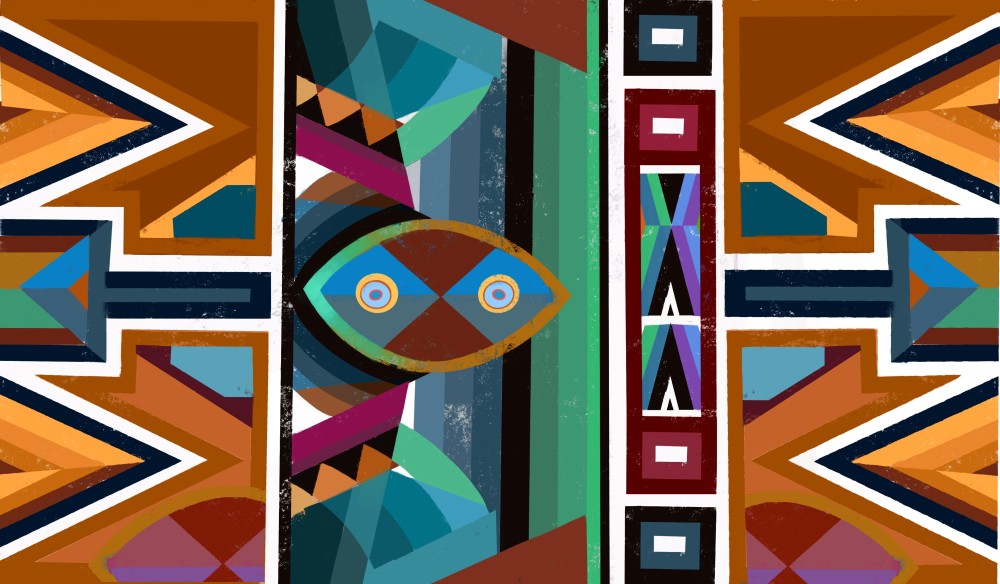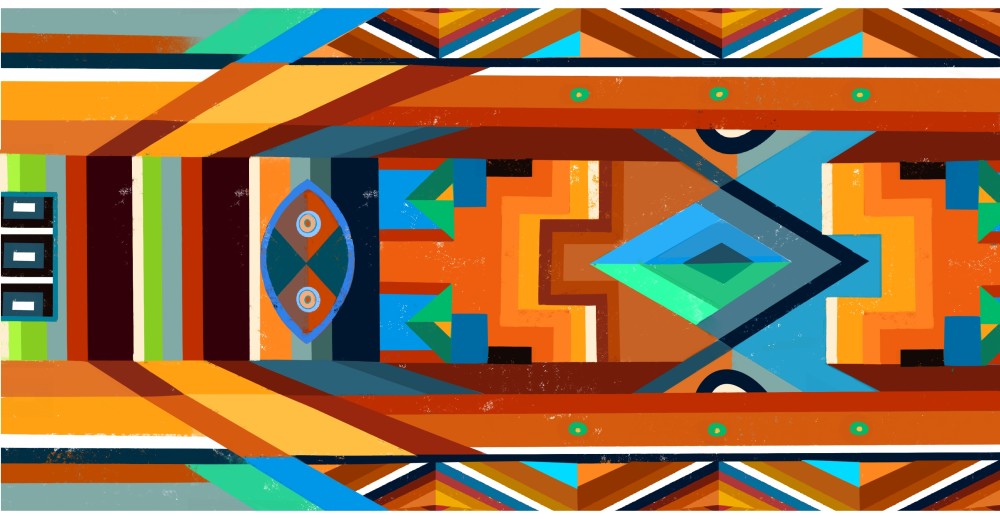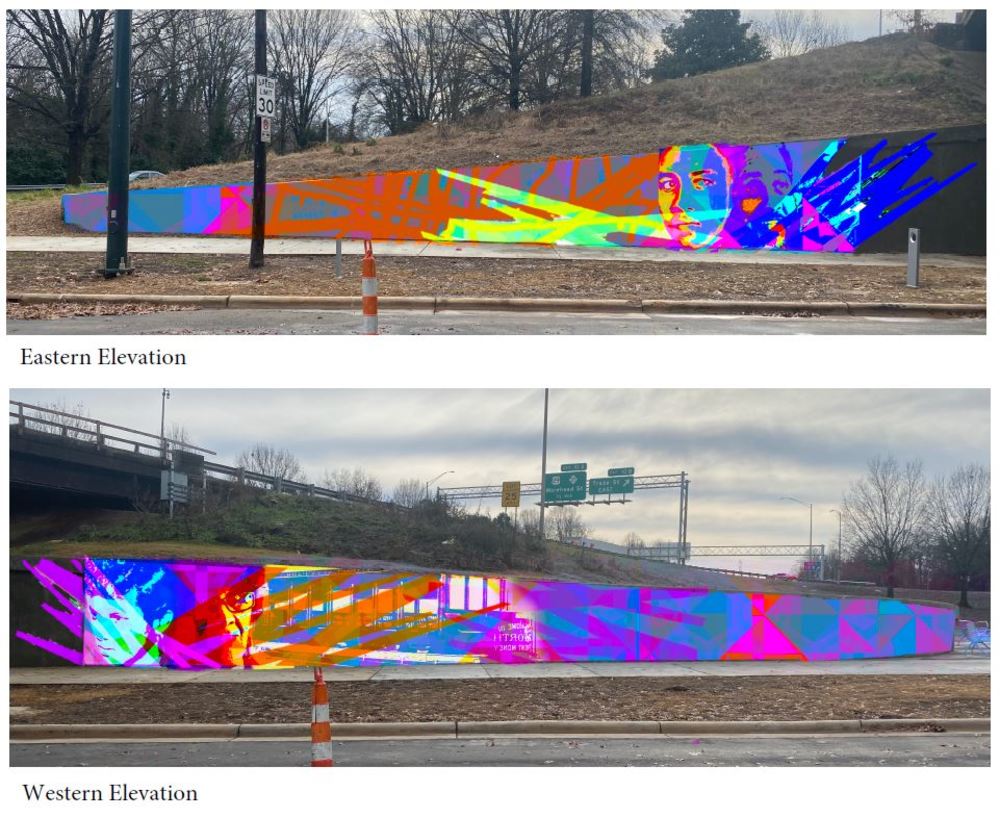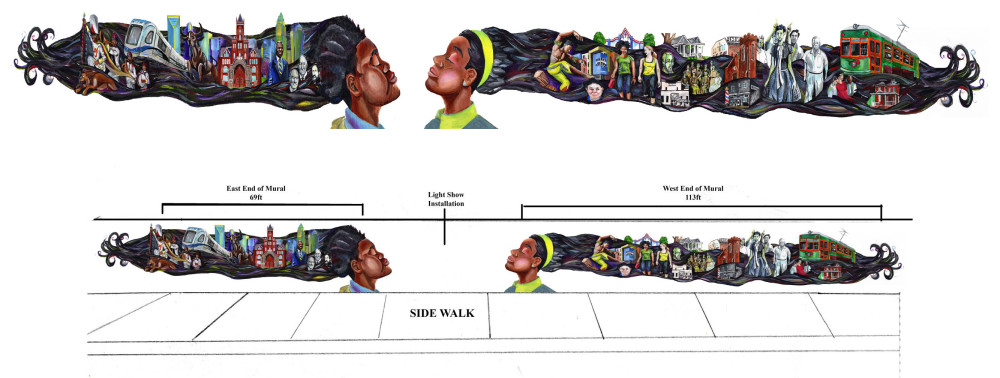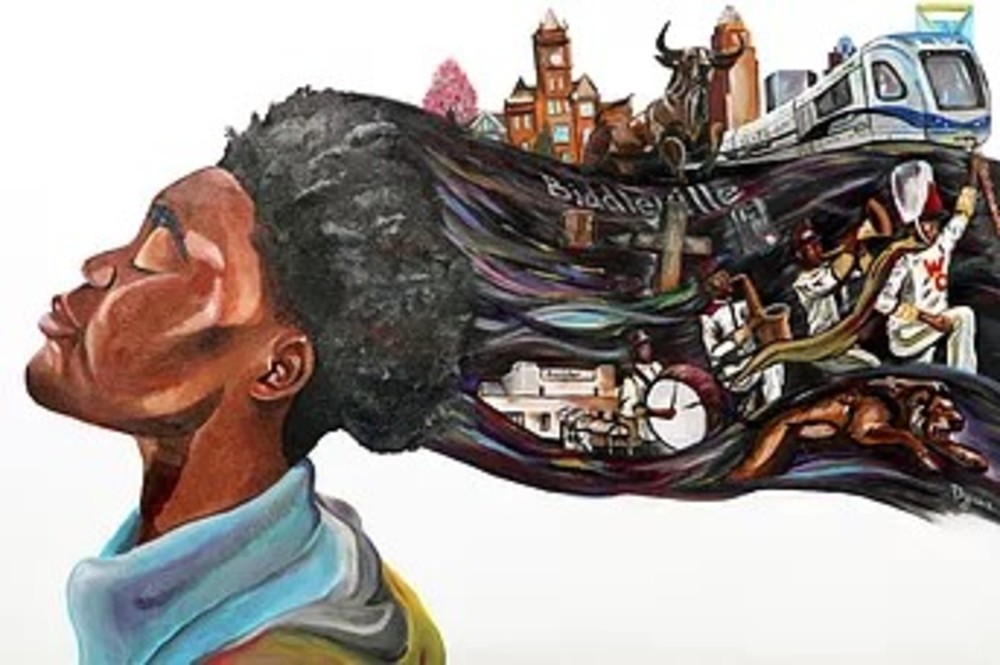W Trade/I-77 Underpass Mural
W Trade/I-77 Underpass Mural
The City of Charlotte recently completed a pedestrian plaza and multi-use trail at the W. Trade/I-77 Underpass in the Historic West End. The City released a Request for Proposals to invite local artists to submit a concept to complete a mural on the retaining wall on either side of the underpass. Artists who have an appreciation and in-depth knowledge of the history and culture of the project area were requested. Below you will see the 6 concepts that were chosen as finalists by a selection committee composed of City of Charlotte staff and neighborhood leaders. Please review these concepts and rank them in order based on your preference. One of these concepts will be implemented based on the results of this survey.
Concept A
The Westend is steeped in history. Biddleville, home of the Biddle Institute that was built by freed slaves so they could provide themselves with an opportunity to receive an education. The same institution that would later go on to play and win the first Black football game in history. Seversville, home of one of the most celebrated litigators of the Civil Rights era Julius Chambers. All Tied together at 5-points which once was an epicenter of culture and commerce.
My submission speaks to the significance of history and generational growth. As you can see the three characters represent the wisdom and guidance of the generations past, the prosperity, growth and willingness to serve of the present generation, and the future generations spirit of youth’s willingness and thirst to learn and receive. All gazing in the direction of Center City which to all of us represent growth and opportunity. This piece invokes the mindset of giving insight into the significance of history and meaning in this community while keeping the opportunities the and connections that change and growth have to offer in sight.
If given the opportunity I would like to use actual members of the community to replace the figures in the concept art as well as speak to community members in order to add elements and symbols that imbue the mural with meaning. As a member of this community for over a decade, I feel it’s a duty and an honor to represent this community in the brightest light possible using my art.
Concept B
I believe this piece deserves to be collaborative, engaging, and community-driven. To design the mural myself would be a disservice to the opinions, insights, and knowledge of community members and undermine the freedom that comes from the creative process. The overall idea would be to create a piece called “I am Charlotte” that is a beacon of light that shines on Charlotte’s history and utilizes several Charlotte-based artists to create sensory imagery for the future.
Historically, the intersection at Five Points has undergone decades of displacement and removal through various processes of Urban Revitalization. This started with policy alterations that removed Black and Brown people from Downtown Charlotte, renamed Uptown. Through Urban revitalization, housing services were not replaced to reestablish places like the various Black enterprises and businesses in Five Points. These epicenters, or Black Wall Streets, were destroyed and interjected with interstate highways. Economic barriers compounded the issue by preventing Black and Brown families from owning houses as banks were less likely to provide loans.
After Brown vs. The Board of Education, CMS shifted into a period of integration, and West Charlotte became the role model for diversity. It also became one of the epicenters in the city for Civil Rights Protests, including college students having sit-ins at Johnson C. Smith University. Due to the reorganization of bussing and redlining, school districts and bussing systems became increasingly segregated. Together, these inequities created the Charlotte we know and navigate today. However, this history is essential to acknowledge and recognize to progress for the future. Through art, healing and reclamation can occur from knowledge shared intentionally and interactively. However, art has been a precursor to gentrification in the city.
Seen within Uptown and spreading to other areas of the city, established residents are financially unable to compete with increasing rents, taxes, and housing prices. Murals and art districts heighten cultural value to locations and provide an aesthetic that brings people, thus bringing larger business, restaurants, and breweries. As this project looks to use art as reclamation and remedy to decades of trauma, this mural must have historical and cultural intentionality. Showcasing the past is necessary if there is a dramatic shift in local population diversity; new residents can be aware of the history of the place they are inhabiting. Therefore, my design suggestion is to include pinnacles of change in Charlotte, such as Dorothy Counts and Brooklyn Village.
As a single applicant, I do not think that painting the wall myself would reflect this project’s true meaning. The final design will exude love and care showcased by color, pattern, and interactive elements. The mural will compliment Ever Upward and Passing Through Light by acting as a beacon, one that shines a light on where we have been and, as you travel under the underpass, leads to where we are going. At night, the mural will transition into the light that comes with a new day or new tomorrow on the other side. This progression will allow artists and community members to share their past through imagery in the form of quilted/intersecting lines while traveling into the more abstracted and open-ended future of Charlotte, but one that requires us all to create. The secondary half of the wall will be a sensory experience relying on what it feels like to be part of Charlotte’s future rather than what it looks like.
Concept C
Playing off of Stacey Utley’s Ever Upward installation - which evokes for me the resilience and power of Charlotte’s Black communities, and Erwin Redl’s Passing Through Light - which literally illuminates a passageway into the West Side, I feel that a mural that uplifts the historical figures and buildings that have had a major impact on our city and Charlotte’s Black community can be a catalyst for learning, connection and pride for all Charlotte residents.
My vision is to provide the public with a rich visual history of Historic West End that includes vibrant colors, building silhouettes in the background and prominent portraits in the foreground. While ultimately I would like community input to decide the exact content that is included in the mural, I would hope to include figures such as Hattie Leeper - the first Black woman on Charlotte radio, Reginald Hawkins - a key figure during the Civil Rights era in Charlotte that worked to desegregate schools and businesses, or Frederick Douglas Alexander - the first Black City Council member to be elected since 1890. The building references could include JCSU, Grace AME Zion Church or The Excelsior Club - Charlotte’s first Black nightclub and a center for Black social and political life. Paying homage to Old 2nd Ward Highschool - Charlotte’s first high school for Black students - I’d also include a repeating pattern of the school’s yearbook graphic in the background.
For me, understanding, learning and connecting to the history, neighborhoods, buildings and culture of Historic West End deserves prominence in the Charlotte landscape and public discourse. I can only hope to contribute to that goal in a small way through this project.
Concept D
The thesis of my work affirms cultural representation and visibility to marginalized communities while visualizing interconnectedness across shared environments. Overall, my goal is to recognize and provide visual context to the direction that the Historic West End is growing while complementing the newly developed construction, architecture, and installations at Five Points Plaza. I am inspired to use complimentary colors in relationship to the Passing Through Light installation so that the moving lights have an animating effect to my design. The ideal color scheme would also have earth tones in relationship to the Ever Upward sculpture complimented by vibrant and electric accents that provide both fluidity and wonder to the viewer.
My intention with this design, titled Evolution, is to bridge the natural elements of the environment surrounding the site with patterns and tessellations that provide depth to the cultural heritage of the Historic West End. In addition to the design, I would like to add local figures, flora, and animals that are chosen by the neighborhood and community leaders, if approved by the committee.
This particular style of art is composed of large shapes that help develop a larger image. The geometric symbols provide visual aphorisms that are not only visually appealing to the eye, but also have an uplifting message when studied closely. This concept was created in proximity to West African and Indigenous tribal motifs. Ultimately, I would like to these two murals to also serve as a visual timeline; one wall representing the history and the other wall representing the future.
Concept E
For these conceptual designs I utilized a similar color palette to Erwin Redl’s light installation Passing Through Light in order to create a sense of unity between the works. I also utilized the silhouette of Ever Upward by Stacey Utley & Evoke Studio Architecture as an abstract design element in the background and on the ends of the murals that face inward to the underpass. I did this so that subconsciously the viewer could seamlessly transition between the different visual mediums of the mural, the sculpture, and the light installation. The abstraction of the sculpture also allowed me to create a more organic edge as apposed to an abrupt stop on the murals allowing for a more fluid transition between each section.
For both sections I decided to use figures that have close ties to the area as the primary focus, and then to abstract out additional historical references to create the backgrounds.
For the eastern wall section I used a portion of a historic map of the West side to create the abstract lines in orange that intermingle within the layers. These lines guide your eyes to the central focus of the piece where I decided to use two images of the late civil rights activist and student of JCSU, J. Charles Jones. One image is of him in his youth. Stoic and determined he looks towards the future and second image of his future self, an older man reminiscing on a life of civil service.
On the Western wall I chose to mirror the motif of youth paired next to an aged reflection with the images of Civil Rights activist, and resident of the West Side, Dorothy “Dot” Counts-Scoggins. The first image of her is as a young girl on the day that she was one of the first of four black students to attend Harding High-school and begin the process of desegregation in Charlotte. The second image is of her at present day. Emerging from the background is a historic trolley car similar to those that used to run up Beaties Ford Rd. Tying in the old with the new, it’s Westward motion signals to the future of the area.
These mock-ups are intended as a general place-marker for the possible direction the final design could take. Discussions with the community and feedback will ultimately alter the final design. Variants, for example, could be focusing on portraits of community members and not just individuals of prominence, or not using portraits at all and focusing more on the abstracted historic elements in the background.
Concept F
My mural proposal is a two-sided composition that chronicles the history, culture, and academic legacy of the Biddleville community. The mural depicts two young African American scholars facing one another. They reflect proudly on different aspects of the wonderful heritage of the Historic West End. I chose black youth as the main figures to emphasize the importance of knowing ones own culture, heritage, and lineage. As a African American teacher, I want black youth to see themselves reflected in a mural about the historic Biddleville community. I also want them so see that education has been and will always be staple in communities of color.
Much in the same way Stacey Utley’s folded metal panels represent “collective work of the community”, I depict historical landmarks, scenes of the arts, and key historical figures, telling the collective story of the corridor. Swirling colors stream from each figure’s head to create a tapestry that surrounds the montage of images. These colors create a cohesive pattern that unifies the individual portrayals. They also create a vibrancy, that will energize the underpass wall. The wave of colors also creates the repeating imagery specified in the mural requirements.
To accommodate the “Passing Through Light” installation by Erwin Radi, the two main figures in my proposed mural layout, are separated in the center of the underpass wall. This creates a negative space for which to accentuate the light show. Pops of blues and yellows can be seen throughout the entire composition. They reflect the two main colors in Radi’s light show as well as the JSCU school colors. These two colors are used to emphasize the clothing of the two main figures as well as the city skyline, the wave itself, and the monochromatic images of historical figures.
The West End view of my proposed mural takes the viewer on a journey throughout the current culture and history of the corridor. This side of the mural is longer than the east side, to meet the size requirements of the project. The total size will measure 113 ft to the west of the underpass. The east side of the proposed mural emphasizes the educational legacy of the historic corridor. It also underscores the growth of the greater Charlotte community and its forward-thinking vision. This side of the mural is shorter than the west, to meet the size requirements of the project. The total size will measure 69 ft to the east of the underpass.
